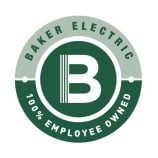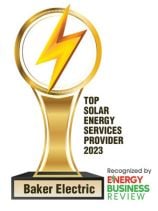There are myriad reasons why solar is an ideal move for businesses, nonprofits, government agencies and other organizations. It provides great return on your investment, improves cash flow, and allows you to recover costs within a few years. Solar also brings operational resiliency and efficiency and protection against rising energy costs, while allowing you to demonstrate your commitment to environmental sustainability.
And the news gets even better. The recent passage of the Inflation Reduction Act, a law authorizing $369 billion in clean energy and climate related spending, has brought additional benefits and incentives for commercial solar and the renewables market in general.
Two Game Changing Federal Tax Credits
Under the Inflation Reduction Act (IRA), when your organization goes solar you can choose between the Investment Tax Credit (ITC) and the Production Tax Credit (PTC), two credits previously set to be phased out in the near future. Both incentives bring a 30% transferable credit toward system cost. There are even additional credits available on top of the 30% if your project meets particular content requirements, is located in an energy community (like on a brownfield or a former coal plant), or benefits a low-income community.
30% or more savings with the Investment Tax Credit
The ITC is a credit toward the cost of a solar, solar and storage or stand-alone energy storage project. With the IRA, if your commercial solar project is under 1 MW in capacity it is eligible for the full 30% credit if placed in service after 2021 and prior to 2025. Beginning in 2025, ITC eligibility will depend on whether the solar and electric sectors meet the U.S Department of Treasury’s goals for reaching a 75% reduction in emissions below the levels of 2022.
If your solar project is bigger than 1 MW, ITC eligibility will be dependent on metrics currently being hashed out by the Treasury with regards to prevailing wage and apprenticeship requirements for projects. When those metrics are defined, after 60 days these larger commercial projects will be eligible for a 6% base credit with the remaining 24% relying on whether or not the project meets the needed labor requirements.
Up until the end of 2022, commercial energy storage systems must be paired with solar and powered by solar at least 75% of the time for five years to qualify for the ITC. However, with the IRA, your stand-alone energy storage project of over 5 kWh in size qualifies for the ITC if it is placed in service in 2023, regardless of whether it is charged by solar. Like commercial solar projects, it is subject to prevailing wage and apprenticeship requirements to be set by the Treasury Department and guaranteed for eligibility until 2025.
For solar projects under 5 MW placed in service in 2023, the ITC is also available for solar interconnection costs, the costs incurred by a utility for connecting, transmitting and administering a project. This is particularly helpful given that these fees are included in your system cost and can be substantial.
The New and Improved Production Tax Credit
The PTC is different from the ITC in that it generates credit for each kWh produced for the first ten years of a project's lifetime, as opposed to the ITC, which provides the full value of the credit up front. Under the IRA the amount of the solar PTC is $0.026/kWh for 2022 and will rise with inflation. The full PTC is available if your commercial solar project is placed in service after 2021 and prior to 2025 or begins construction prior to 2025.
After 2024, the credit becomes a “technology neutral” structure, which means the credit will apply to any electricity generating facility of a type that the Treasury Department determines on an annual basis has an "anticipated greenhouse gas emissions rate" no greater than zero. Eligibility for the full inflation-adjusted PTC will also be determined by whether or not your project meets new prevailing wage and apprenticeship requirements.
It will require some specific calculations to determine whether the ITC or the PTC would be the most economically viable option for your organization, calculations that include project cost, size and capacity, discount rate you can apply to the present value of the 10 year PTC stream, and the assumed PTC inflation rate. Your stand-alone storage project is not eligible for the PTC.
Direct Pay for Tax-Exempt Organizations
The IRA has ushered in a very helpful “direct pay” option for both the ITC and the PTC. Prior to the new legislation, only homeowners and commercial entities with some tax liability were eligible for federal solar tax credits. If nonprofits and other tax-exempt entities wanted to enjoy federal savings, they had to partner with developers or banks that could tap federal tax benefits.
Direct pay means that if your project is placed into service in 2023 it can receive the 30% or more credit as a direct payment. This frees you up to receive the credit directly and own the solar system. If your organization can’t pay for the system with cash upfront you can pursue something like a bridge loan from an installer or bank and pay the government incentive amount back to the loan company once you receive it, while paying the rest on an installment plan.
Any organization that has been categorized by the federal government as having tax-exempt status qualifies for direct pay. These include community centers, medical facilities, museums and cultural organizations, golf courses, and more. Government buildings, public schools, and state colleges and universities can also enjoy direct pay savings. Unfortunately, there is no direct payment option for energy storage. Beginning in 2024, projects that don’t meet the yet-to-be defined domestic manufacturing requirements will only qualify for a portion of the full 30% direct pay option.
The IRA’s impact on manufacturing and transmission
There are two areas that have shifted with the IRA that will make it easier for commercial solar developers to meet demand: manufacturing and transmission. By bolstering domestic solar manufacturing the legislation helps solve some of the chronic supply chain issues that have cropped up in recent years in response to restrictive policies and problems related to overseas supplies.
Transmission, the ability to connect solar and energy storage projects to the electric grid, will also be improved with the passage of the IRA. The IRA is injecting nearly $3 billion into addressing transmission, funding that will help ease the serious backlog of projects that has plagued the renewables industry, including commercial project developers, over the past few years.
While boosting domestic manufacturing and easing transmission woes does not bring direct savings to businesses and other organizations seeking to go solar, these factors will certainly make it easier for developers to make these projects a reality. And by lowering costs for commercial solar developers, it will lower costs that would otherwise be passed on to your organization.
Ultimately, the passage of the Inflation Reduction Act means very good news for organizations looking to make the economics of a renewables project work. The federal government estimates that the legislation will help reduce greenhouse gas emissions by about 40% by 2030. Happily, for some of you the IRA now makes it possible for your organization to participate in that vital development.








